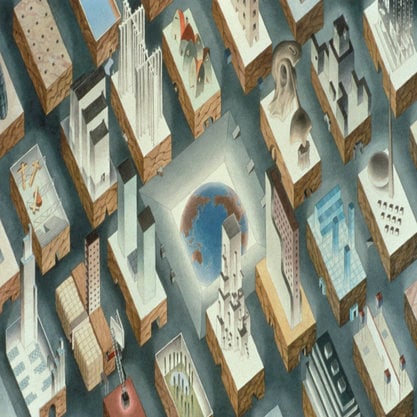Article
Noguchi, Isamu (1904–1988) By Kirsch, Matt
Article
Searching for a redefinition of sculpture, Isamu Noguchi’s work slipped between object-making, industrial design, set design for theater and dance, public sculpture, and land art. Born in Los Angeles, Noguchi was raised in Japan by his American mother and remained estranged from his Japanese father. At age thirteen, he returned to America for schooling. Noguchi was a promising New York sculptor in the academic Western tradition before having what would be a formative experience working as assistant to the sculptor Constantin Brancusi in Paris in 1927. It was from Brancusi that Noguchi gained his first understanding of the nature of abstraction as a means of distilling essences. In New York in the 1940s, Noguchi created a series of delicate sculptures in slate and marble (including Kouros 1944–1945) that stood under the architectural tension of their interlocking elements. Despite growing notoriety, in 1949 Noguchi embarked on a two-year excursion throughout Western Europe, India, and Southeast Asia to observe how societies related to secular and ceremonial spaces like temples, plazas, and marketplaces. His observations formed the basis for his collaborations with architects on public spaces from the 1950s onward, which recast sculpture in experiential terms.



